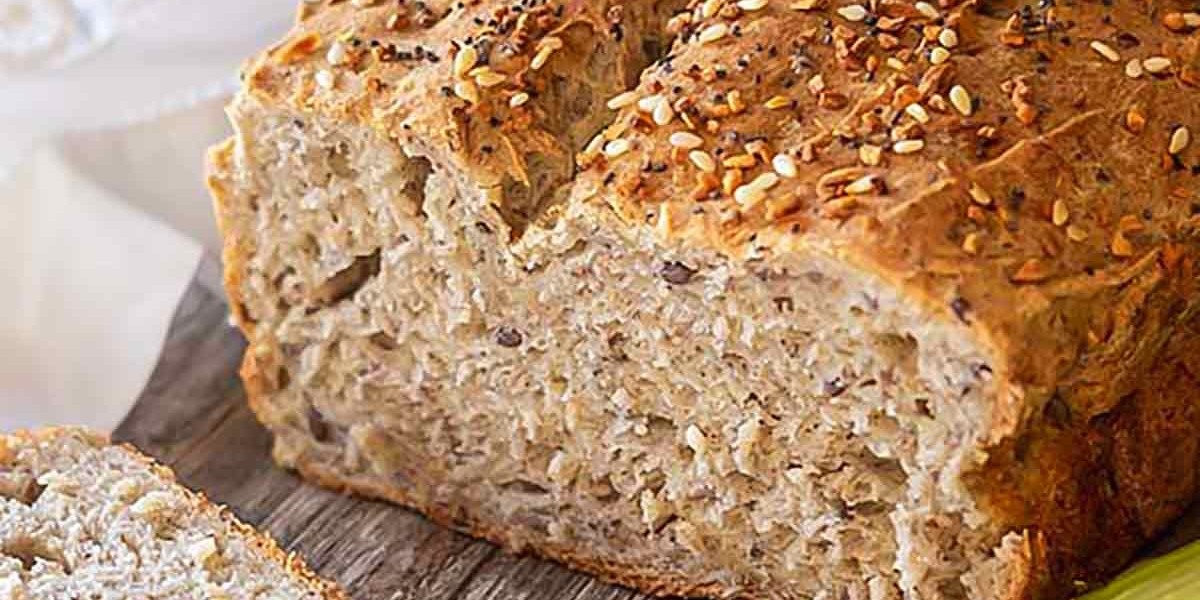Creating a single loaf of bread that is free from gluten, dairy, and eggs might seem like a culinary impossibility. Gluten provides structure, eggs offer lift and binding, and dairy can contribute fat and tenderness. Removing all three presents a significant challenge, leading many to assume that the resulting bread will be dense, crumbly, and lacking in flavor. This misconception prevents countless individuals with multiple dietary restrictions from enjoying the simple pleasure of a warm, homemade slice of gluten free bread.
However, with a clear understanding of the purpose each excluded ingredient serves and the plant-based alternatives that can take their place, baking a successful vegan and gluten-free loaf is not only possible but can yield incredibly satisfying results. This process is one of careful substitution and formula balancing, relying on whole food ingredients and precise techniques to build structure and flavor from the ground up. For those mastering the basics of gluten-free baking, our resource on gluten free bread at Noom Eats provides a strong foundation to build upon.

This guide will walk you through the essential principles of vegan gluten-free baking, introduce you to the key ingredients that make it work, and provide a reliable, tested recipe that proves dietary restrictions do not have to mean sacrificing quality or taste.
Understanding the Roles: What We're Replacing
To successfully create a vegan gluten-free bread, we must first understand what traditional ingredients do and then find effective plant-based solutions.
1. Replacing Gluten (The Structure) Gluten is a protein network that provides elasticity and strength, trapping gas bubbles to allow the bread to rise. In standard gluten-free baking, this role is often filled by:
- Xanthan Gum or Guar Gum: These are common additives that provide stretch and stickiness.
- Psyllium Husk Powder: A whole-food option that forms a gel when mixed with water, creating an elastic structure that closely mimics gluten. This is often the preferred choice for vegan baking for its clean-label appeal and effectiveness.
2. Replacing Eggs (The Binder and Lift) Eggs perform multiple functions: they bind ingredients together, add moisture, and contribute to leavening.
- The Binding Power: The gel created by psyllium husk is exceptionally effective at binding the ingredients, making it a dual-purpose solution for both gluten and egg replacement.
- The Lifting Power: Leavening in vegan bread comes primarily from chemical leaveners like baking powder and baking soda, or from active yeast. The structure built by psyllium husk and gums is strong enough to trap the gases these agents produce.
3. Replacing Dairy (The Tenderness and Fat) Dairy products like milk and butter add fat, which tenderizes the crumb and contributes rich flavor.
- Plant-Based Milks: Any unsweetened and unflavored plant milk (almond, oat, soy) can be used as a 1:1 substitute for cow's milk.
- Plant-Based Fats: Neutral oils like avocado oil or light olive oil are excellent for providing fat content. Melted coconut oil or vegan butter also work well.
The Key to Success: Psyllium Husk Power
For vegan gluten-free bread, psyllium husk is arguably the most important ingredient. It is a form of soluble fiber derived from the seeds of the Plantago ovata plant. When it comes into contact with water, it expands and forms a thick, mucilaginous gel.
This gel is what gives vegan gluten-free dough its workable, elastic quality. It acts as a binder, holding the flours and starches together, and it creates a network that can stretch and trap gas during fermentation and baking, resulting in a airy crumb and a bread that can actually be sliced without crumbling. Using whole husks will give a more noticeable texture, while a finely ground psyllium husk powder will integrate seamlessly, producing a smoother crumb.
Building Your Vegan Gluten-Free Flour Blend
A balanced flour blend is the foundation of any good gluten-free bread. For a vegan loaf, we want a mix that provides structure, lightness, and a neutral or slightly sweet flavor profile.
A Sample Vegan All-Purpose Blend:
- 2 cups (280g) Brown Rice Flour (for structure)
- 1 cup (140g) Sorghum Flour (for tenderness and nutrition)
- 1 cup (120g) Tapioca Starch (for chew and elasticity)
- 1 cup (160g) Potato Starch (for lightness and moisture)
This blend can be made in a large batch and stored in an airtight container. Remember to whisk it thoroughly before each use to ensure the ingredients are evenly distributed.
A Trusted Recipe: Simple Vegan Gluten-Free Sandwich Bread
This recipe is designed for simplicity and reliability. It uses a combination of yeast and baking powder for a good rise and psyllium husk as the primary binder.
Ingredients:
Dry Ingredients:
- 3 cups (420g) gluten-free flour blend (see above)
- 3 tablespoons (20g) psyllium husk powder
- 2 tablespoons sugar (helps feed the yeast)
- 1 packet (2 ¼ tsp) active dry yeast
- 2 teaspoons baking powder
- 1 ½ teaspoons salt
Wet Ingredients:
- 2 cups warm unsweetened almond milk (or other plant milk)
- ⅓ cup neutral avocado oil or melted coconut oil
- 1 tablespoon apple cider vinegar
Instructions:
1. Activate the Yeast: In a small bowl, combine the warm plant milk (around 110°F) with the sugar. Sprinkle the yeast over the top and stir gently. Let it sit for 5-10 minutes until it becomes foamy. This indicates the yeast is active and alive.
2. Combine Dry Ingredients: In the bowl of a stand mixer, whisk together the gluten-free flour blend, psyllium husk powder, baking powder, and salt. Ensure the psyllium is evenly distributed throughout the flour.
3. Combine Wet Ingredients: Once the yeast is foamy, whisk the oil and apple cider vinegar into the yeast mixture.
4. Mix the Dough: With the stand mixer fitted with a paddle attachment running on low speed, slowly pour the wet ingredients into the dry ingredients. Once combined, increase the speed to medium and mix for 3 full minutes. The mixture will quickly thicken into a very stiff, play-dough-like dough. This is the psyllium husk working. If it seems too dry and isn't coming together, add an additional tablespoon of plant milk at a time until it forms a cohesive ball.
5. First Rise: Grease a large bowl with a little oil. Place the dough ball into the bowl, turning it once to coat it in oil. Cover the bowl with a clean kitchen towel and place it in a warm, draft-free spot. Let the dough rise for 1 to 1.5 hours. It may not double in size, but it should look noticeably puffed.
6. Pan and Second Rise: Grease a 9x5 inch loaf pan. Punch down the dough to deflate it. Transfer the dough to the prepared loaf pan. Using wet hands, press and smooth the dough evenly into the pan, pushing it into the corners. Cover the pan with the towel and let it rise again for 30-45 minutes. Meanwhile, preheat your oven to 375°F (190°C).
7. Bake: Place the loaf in the preheated oven. Bake for 55-65 minutes. The bread is done when the top is deeply golden brown, it sounds hollow when tapped, and the internal temperature reaches 205-210°F (96-99°C) on an instant-read thermometer.
8. Cool Completely: This step is non-negotiable. Remove the bread from the oven and let it cool in the pan for 15 minutes. Then, carefully transfer the loaf to a wire cooling rack. You must allow it to cool completely to room temperature before slicing. This can take 2-3 hours. Slicing too early will disrupt the delicate internal structure and result in a gummy texture.
Troubleshooting Common Issues
- Dense Loaf: The yeast may have been dead, the rising spot wasn't warm enough, or the bread was underbaked. Always test with a thermometer.
- Crumbly Bread: This usually indicates not enough binder. Ensure you used psyllium husk powder and not whole husks, and measure accurately.
- Gummy Texture: The bread was likely sliced while still warm. Ensure it is completely cool. It could also be a sign of underbaking.
- Cracked Top: This is very common and not a problem. It happens as the bread expands rapidly in the oven's heat.
Baking vegan and gluten-free bread is a rewarding exercise in understanding how ingredients work in harmony. By using psyllium husk as a powerhouse binder and building a balanced flour blend, you can create a loaf that is soft, sliceable, and entirely free from common allergens. This bread proves that with the right knowledge, everyone can enjoy the fundamental comfort of homemade bread.






